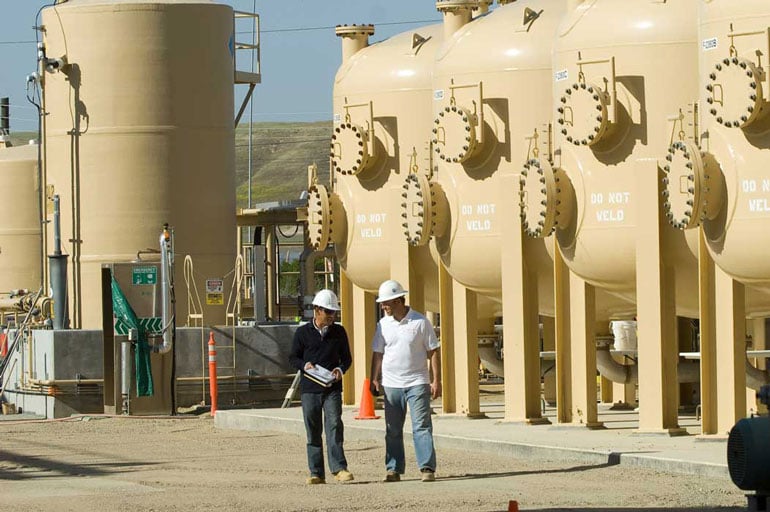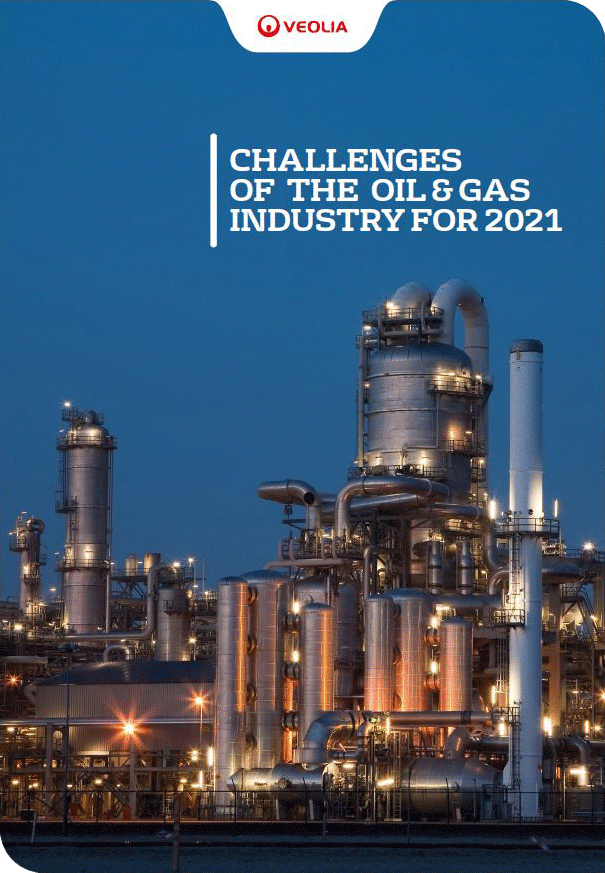Looking forward to 2021 and beyond, the oil and gas industry faces unprecedented challenges to operate efficiently and sustainably while keeping an eye on operational shifts and requirements. In the United States, with a new presidency and emerging from a pandemic, the global economy is at a breaking point. Americans are taking a hard look at sustainable practices for their businesses, and the oil and gas industry has captured the national spotlight.
A moment to stop, evaluate, and consider new technologies and solutions
Taking a holistic approach to operational choices and proactively re-evaluating your site’s operational efficiencies and modus operandi might yield unexpected solutions.
Managing Environmental Pressure and Crafting a Sustainable Plan
Oil and gas companies are facing a number of new challenges. Predominantly among these is the potential of operating in a sustained low-price environment with increasing pressure to enhance sustainability and minimize environmental impacts. Amid the highly uncertain business climate, one thing has become clear: oil and gas companies need to adjust their operating strategies in order to remain competitive.
To survive in this challenging environment requires a holistic approach that evaluates current operations critically and proactively. An interesting way to process all that 2020 has brought to light is to consider business operations in 3 distinct ways.
Critical questions to ask for 2021 operations
- What operational efficiencies can I capitalize on for my current systems and operations?
- What new technologies and innovations are available to improve operational performance?
- What major energy transition trends potentially apply to my site’s operations and could be put into our long term sustainability plan?
Let's explore the influencing factors, available options, and related challenges to these questions from the perspective of a global environmental company invested in the success of North American oil and gas sustainability.
1. Ways to optimize the performance of your current systems
In a perfect world, your site could immediately install all-new efficient technologies to improve yield and reduce environmental impact. The reality of today’s financial circumstance requires a more nuanced and strategic approach. With the prospect of a “lower for longer” price environment looming large, reducing costs will remain a key priority. Achieving this will require operators in both the upstream and downstream segments to maximize the performance of existing assets by improving efficiency, increase uptime, and optimize production/throughput.
- Reduce Costs Through Increased Operational Efficiency - With capital budgets stretched thin, maintaining equipment integrity and functionality is critical. Outsourcing everything from system upgrades and preventive maintenance to remote services and digitally-enabled process optimization can help you improve the efficiency and uptime of your systems, leading to lower operational costs, reduced downtime, and improved margins.
- Optimize water lifecycle management - Making the most of every drop of water your site uses requires management of all stages of the water lifecycle. Innovative solutions that enable you to sustainably and cost-effectively manage your entire water lifecycle – from abstraction and treatment to recycling, reuse, and/or discharge – can drastically reduce your water footprint and improve your environmental, social and corporate governance (ESG) performance.
- Site audit by industry experts - Consider inviting an industry expert to come review your site. While onsite he or she will learn about your operational and maintenance challenges, review your process control data, and work with you to develop tailored solutions for your plant. An outsider’s perspective can help uncover new process efficiencies.
2. Innovation and digitalization in a changing market
The uncertainty we face in the U.S. oil market is accelerating the need for digital transformation. Industry experts from AFPM note that digital transformation is “really focusing on getting incremental value from all of the investments made through digitalization and figuring out new ways to apply them to bring incremental value to an enterprise and how it operates.” Successful oil and gas companies will need to focus their efforts and investments towards innovative water, waste, and energy solutions that bring value to overall operations.
Leverage new technologies to minimize resource consumption and improve performance
Now more than ever, companies like yours have an important role to play in setting near-term emissions targets, using standardized and credible reporting, and accountable systems tracking. Digitally enabled operational processes can help you capture data and report on your plant’s performance, giving you the insight and metrics you need to improve efficiency, cut costs, and reduce resource consumption. When exploring digital transformation at your site, consider the following value adds:
- Designing and building smarter facilities and systems that track performance and measure sustainability metrics
- Upgrading, expanding and optimizing existing assets through digitally enabled systems like Hubgrade
- Ensuring business continuity and stability of operations (anticipating crisis, preventing failures, shutdown, regulatory breaches)
- Managing regulatory and environmental compliance
- Enhancing utility invoice processing, budgeting and financial reporting
Innovation and technology in the upstream industry
Upstream oil and gas producers generate tens of millions of barrels of produced water that need to be managed daily. Producers are turning to two sustainably innovative solutions that increase productivity and operational safety: produced water treatment for reuse or discharge.
By using innovative technologies to process and treat the water, producers avoid disposal methods such as salt water well injection, while also having a positive impact on the environment. One such Veolia client has effectively recharged a water basin in water-stressed California by treating 50,000 barrels/day for discharge and the remaining 70,000 barrels/day they treat for reuse within their own operations.

3. Which energy transition trends affect your 2021 operations and long term sustainability plan
Increased scrutiny on environmental, social and corporate governance (ESG) metrics
In addition to being subjected to increasingly stringent environmental regulations, oil and gas companies are also under pressure to voluntarily adopt more sustainable operating practices. Everyone from producers to refiners are being asked to reduce their environmental footprint in measurable increments, yet many standards are just starting to be defined. Just a few weeks ago, some of the world's largest accountancy companies like Deloitte, EY, KPMG and PwC brought ESG reporting into the headlights, signing on to common standards that will allow investors to fairly compare non-financial KPIs. The goal is to align performance reporting with strategic ESG metrics to track progress against corporate goals.
While standardization is a step in the right direction, Increasing transparency of complex operations is difficult to navigate. It’s often beneficial to engage environmental partners who specialize in these activities to help you provide guarantees to stakeholders that environmental and societal concerns are being addressed.

Adapting to alternative systems and operations
For decades, innovative global leaders in energy production have worked towards operational efficiency, yet at this pivotal moment in American history there’s heavy scrutiny on traditional oil and gas strategies. The eyes of the nation are on the industry as a push for clean energy remains a top priority.
Converting current refineries to process renewable diesel
Several refineries are looking at converting to renewable diesel as an alternative to traditional refining operations. This change will have interesting effects on the biofuels market in its current form. The new production will need to find a home within the Renewable Fuel Standard (RFS) structure, and we’ll see if the mandates and incentives provided at the federal- and state-levels assist in absorbing the new production into the market.
What’s the status of converted refineries in the US today?
Fourteen U.S oil refineries are transforming their plants into renewable diesel plants. These facilities represent nearly 5.5 billion gallons of new or potential capacity, which is double the U.S biodiesel industry’s current size. Listed below are a few major refineries that have proposed conversion, are under construction, operational or building new expansions.
- Valero’s Diamond Green Diesel, Norco Louisiana (under expansion)
- HollyFrontier Corp, Artesia, New Mexico (under construction)
- Marathon Petroleum, Dickerson, North Dakota (operational)
- Phillips 66 Rodeo Renewed, Rodeo, California (proposed)
What are the drawbacks to converting a refinery to biofuel
The cost of production of renewable diesel outweighs current production costs. And long term, higher production costs can possibly lead to higher prices at the pumps. Financial barriers stand in the way for many sources of renewable energy — but why is it so expensive? One reason is because the raw material price of corn, natural fats, vegetable oils and other common inputs for renewable diesel are currently more expensive than crude. This presents a supply cost challenge that restricts the viability of completely transitioning to these fuel alternatives. These logistical barriers leave us wondering what exactly the future of oil and gas will look like.
Considering the Path Forward
We’ve addressed some crucial questions affecting the oil and gas market in 2021, but we’ve merely scratched the surface of the complex business operational changes to come.
Regardless of what the next 5-10 years bring, Americans will need energy to power our economy. US oil and gas companies play a critical role in shaping the future of our energy infrastructure, and in this new environment, they are being asked to get creative. How will your company adapt in this crucial moment?



